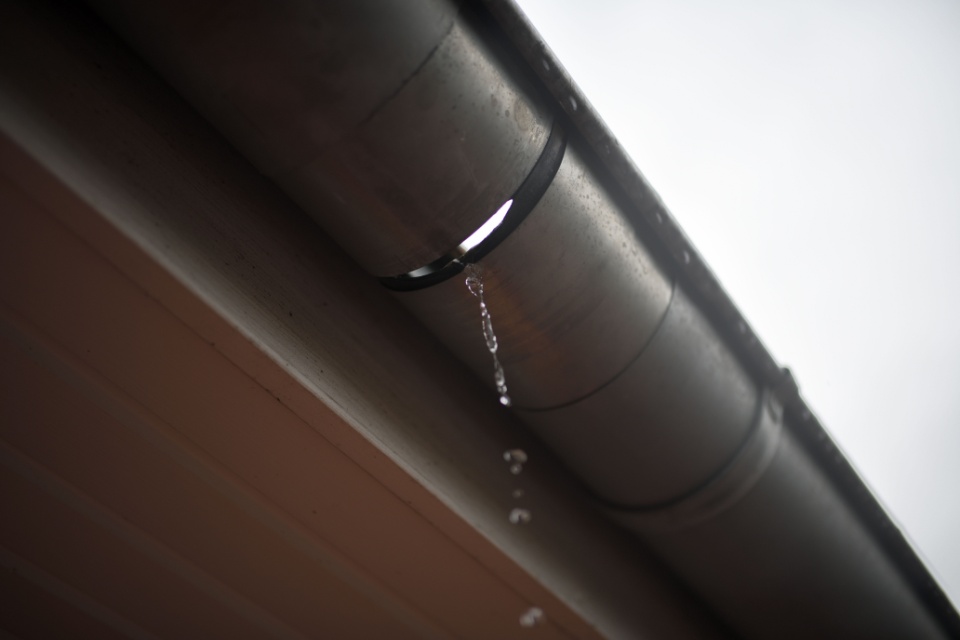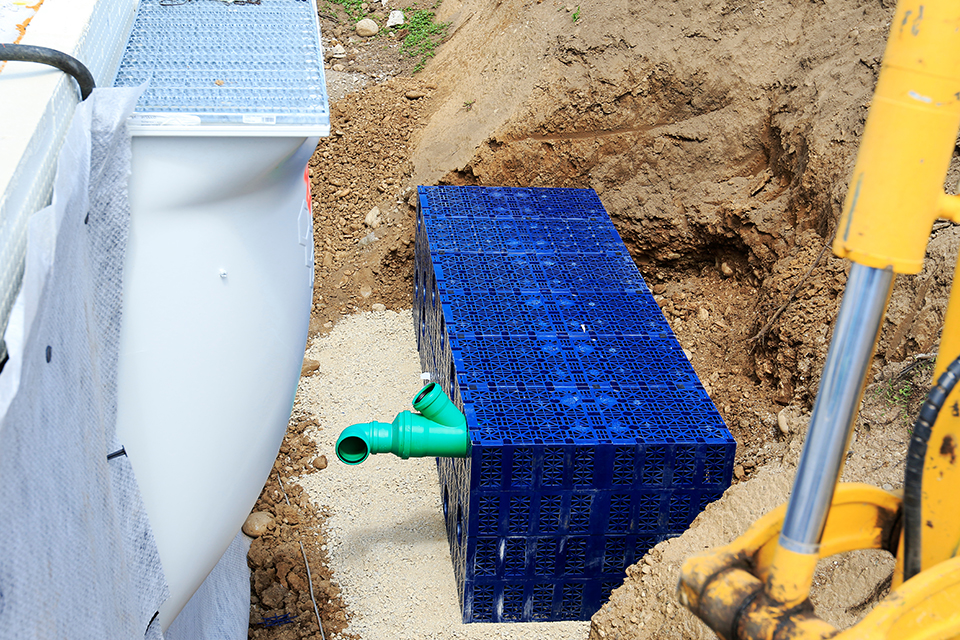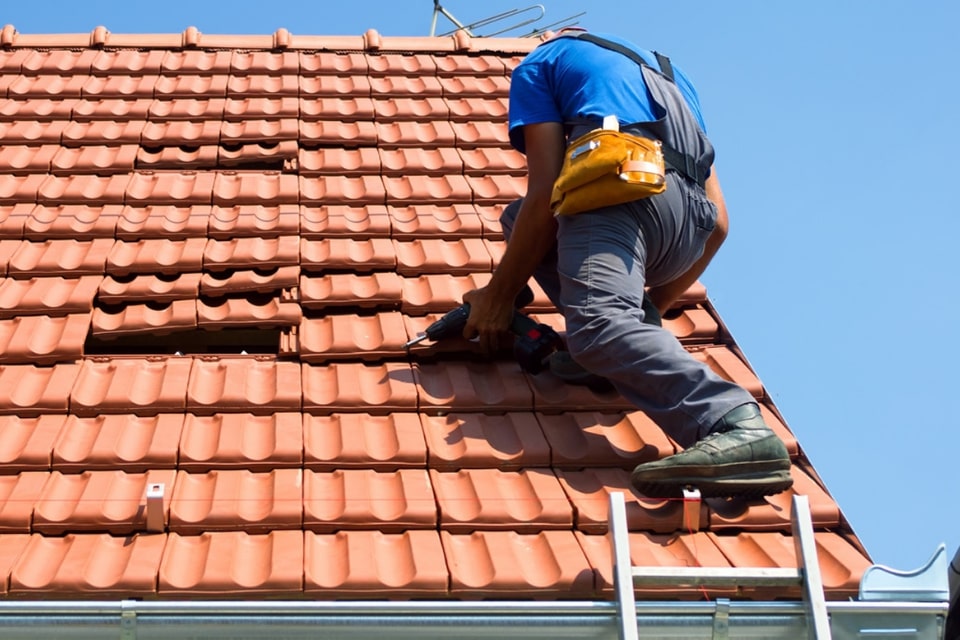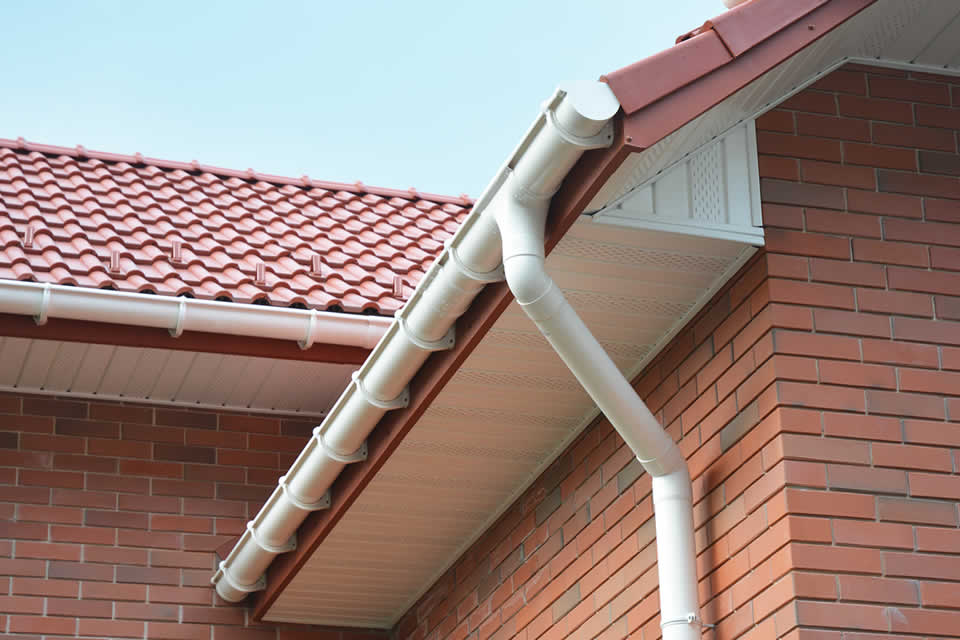Introduction
Our guide to gutter problems covers a wide range of possible issues that may arise. We will discuss these various issues, how to fix them and look at additional topics such as the costs involved in fixing these problems. This article will prove helpful if you wish to identify problems with your guttering or if you would like to prevent issues from arising in the first place.
What is Guttering?
In this section, we will explain guttering and how it works and discuss other subtopics, such as where guttering is used. Guttering is a trough that collects excess rainwater from a house's roof, acting as the final stage in a roof's protection system. Gutters collect rainwater through an opening at the top.
The water is then directed into the guttering's downspouts, which direct the water to the ground level, where it meets and enters your house's drains. Guttering is commonly used in houses but may also be used in sheds, porches, summerhouses, greenhouses, and garages. Guttering is used to prevent severe water damage and, therefore, protect the house's foundation. Gutters can prevent erosion, basement flooding, staining to your house's exterior, mildew, and mould growth. They can also protect your house's landscaping.
Types of Guttering Problems
We will now explore various types of guttering problems, breaking down the nature of each problem and how to fix them. Some problems that may arise are leaking guttering, sagging guttering, clogged guttering, incorrectly pitched guttering and insufficient guttering.
Leaking Guttering
A failure of your guttering seal can lead to cracks and holes, allowing water to leak through. Expansion and contraction of the gutters over time, damage to the gutters and gutter fittings or grit or dirt in the seal can result in this issue. If you notice water dripping from the gutters in an unexpected area or if you notice water accumulating in areas below the guttering that are not the result of the downspout then these are signs that you have a guttering leakage.
Sagging Guttering
Gutters may sag with time as a result of temperature fluctuations, high winds, water damage or/and debris. If your gutters are sagging, you will notice that they are not evenly lined across the roof of your house. It may also appear that the brackets have become loose.
Clogged Guttering
Guttering may clog as a result of moss, leaves and other debris accumulating in the guttering over time. Signs that your guttering has become clogged include that your guttering has sagged, or developed plant growth, stains are appearing on the side of your house, there are more pests and birds on your roof than previously, and water is pouring over the edges of your guttering, suggesting that it is overfilling faster than it should.
Incorrectly Pitched Guttering
Another common issue with guttering is that it needs to be pitched properly. This can happen as a result of an incorrect installation whereby the gutters are positioned at the wrong angle and cannot perform their job optimally. Evidence that your guttering is incorrectly pitched includes signs that your guttering has worn, become rusted or/and is leaking. You may also notice that water is pouring over the sides. The roof itself may have become worn, too.
Insufficient Guttering
Insufficient guttering may leave your home more vulnerable to water damage in various forms. In this case, the gutters may need to be bigger or may not be made of the material needed. It could also be that the gutters are simply a low-quality installation. Overflowing water and sagging guttering are signs of insufficient guttering.
Ice Formation on Guttering
Another issue is if water freezes in the guttering, forming ice. The formation of ice can result in gutter expansion and contraction. Eventually, gutters may fall off due to this cycle repeated over many years. Evidence that this is the issue includes that you live in a region where ice formation is common during the colder months and that you notice that some of your gutters have loosened or/and fallen off.
How Can I Fix My Guttering?
For this section, we will explain how to repair guttering. Each subsection will break down the gutter repair needed to fix each of the issues raised in the previous section.
Leaking Guttering
To fix leaking guttering, first clear the downspouts and gutters to remove any possible blockages. Next, remove the gutter bracket beside the joint that needs repair and is leaking. You may find it preferable to simply remove this gutter section entirely. Then, remove the gutter seal, which is present in the union joint. Analyse the seal and union joint for any signs of damage or splitting.
Replace the seal and union joint if necessary. If the seal is fine, clean it with a slightly wet cloth. Then, clean the union joint and dry it afterwards. Remember to also clean and dry the gasket groove and the gutter on both sides where it attaches to the union joint. Install your new seal through the union joint's grove. Ensure that the union joint and gutters are aligned. Clip the gutter brackets and union joint back into place on the gutter. Apply gutter sealant on both sides of the union joint, and you've completed this type of gutter repair. This will help protect the gutters from leaking in the future.
Sagging Guttering
In this case, you'll first need to repair the gutter spikes for the guttering repair. Remove any loose spikes with the claw side of a hammer or by utilising a pry bar. Inspect the spikes and decide if they are damaged beyond repair and need replacing or if they can be used again. A lack of spike threading means a replacement is needed. Fix the old spikes where applicable, or purchase new ones and install them.
Next, you'll need to repair the brackets. Take off the sagging gutters from the gutter brackets, which have loosened over time. Make sure that every screw used to hold the brackets in place is removed. Fill the screw holes with a waterproof seal. Let the seal dry up. For the brackets, drill new pilot holes. Ensure that the height and angle of these holes are the same as originally. Attach the gutter brackets using the new pilot holes.
Put the gutters back in place in the brackets. Finally, you'll need to repair the gutter hangers. Look for any signs of damage, regardless of how little on the hangers. Remove any damaged hangers and replace them with fresh ones. If they have not been damaged, you may choose to reposition the hangers instead.
Clogged Guttering
To fix clogged gutters, you can use a ladder and then employ thick gloves, several plastic bags, a water hose and a scoping tool as your guttering cleaning tools to remove any debris that has accumulated in the guttering. Avoid metallic scraping, too, if the gutters are made from a material like PVC, as it is synthetic.
Use the scoop to remove any large debris pieces. If there is a clog in the downspout, use a stiff wire piece to empty the middle of the clogging. With a garden hose, run water down the hole to clear away any debris. You may also choose to remove a section of guttering where you think debris has accumulated to clean between each joint. Wash off any grime. With the guttering section back in place, complete the gutter cleaning process by washing off any debris from the guttering as a whole with the garden hose.
Incorrectly Pitched Guttering
To correct the slope of guttering, you'll need to have a second pair of hands to help you. Have a second person hold the gutter as you remove its brackets or hangers. Pull down the gutter roughly 3/4ths of an inch below its original point. Place a temporary screw at the back to adjust the slope. Ideally, the gutter should have a slope of 0.25 inches for every ten feet. Add the gutter brackets back into place once the gutter has been correctly pitched.
Insufficient Guttering
If your guttering is insufficient, you will need to replace them. To do so, first, nail both sides of the fascia board as you take off the gutter. Then, a hacksaw was employed to see into the guttering bolts that join the gutter section. Utilise a rope to tie around each end of the guttering which you wish to remove. Take off the joint and the brackets which are being used to keep the gutter(s) in place on the fascia board.
Gently drop the guttering section with the ropes which are connected to the guttering. Repeat this process for each piece of guttering that you intend to remove. Next, you'll need to fit the new gutters. Make sure you purchase appropriate guttering that will be sufficient. The gutter bracket needs to be installed at the fascia board's top end at a given end of the guttering. It needs to be opposite to the side of the stop-end outlet if your guttering has one. Tie a builder's line or string to the base of the bracket and position the gutter outlet properly by using a plumb line.
On the fascia board, mark this position. Only install the gutter outlet up to 50mmm lower than the location of the roof tiles. Utilise the string/builder's line that is connected to the bracket, and then tie it around the gutter outlet, aligned with the fascia board. Put a markdown to signify each bracket's position with every bracket apart by a distance no more than 800mm or 600mm if the pitch of your roof is particularly steep.
It must also be fitted no further down than 150mm from any joint or fitting. Repeat the process for each of the remaining brackets. Next, fit a stop-end to the initial length of the guttering. Clip the gutter in place on every bracket. Fit the gutter end so that it is lined up with the deep insertion mark that you placed on each of the gutter brackets. Lastly, a union piece needs to be fitted at the opposing end to the first length.
Screw it into place on the fascia board. Then, fit the next gutter length into the fascia board. Join the remaining lengths. Cut the last section with a hacksaw and attach a second stop-end. Make sure that each joint is lined up with each of the insertion depth marks.
Ice Formation on Guttering
You may need to replace guttering if they have become damaged beyond repair. If necessary, undertake the steps as listed in the above subsection. To prevent ice from forming on your guttering, you should clean them and sprinkle salt (sodium chloride). Avoid using rock salt. If there is heavy snow, you should carefully shovel it from the roof. You should also check whether your roof has sufficient insulation.
How Much Will It Cost to Fix My Guttering?
We will now discuss the labour cost involved in having guttering fixed. This section will also break down the hourly and daily cost to hire a roofer. If you need to have one length of guttering replaced on a semi-detached house will cost about £105 in terms of labour costs. To have a leak at the joint, bracket or disconnect rainwater pipe fixed will likely cost about £30 in labour costs. Roofers charge about £150 per day or approximately £18 to £25 per hour. For more information, check out our guide to guttering repairs.
How Much Is a Replacement Guttering?
Some issues with guttering may be beyond repair such as if they are overly worn or if too many parts are beyond repair, making the cost of replacing individual parts too high. In this case, guttering will need to be replaced. For a semi-detached house, the cost of having guttering replaced could cost anywhere from £500 to £1400, depending on the type of guttering and the size of the house. This covers the supply costs, labour costs, waste disposal cost, the cost of having the old gutters removed and of having new gutters installed. For further information on guttering replacements, visit our guide here.
FAQs
Q: What is guttering sealant
A: Gutter sealant is used to repair downpipes, flashing and gutters.
Q: What is ogee guttering?
A: It is a popular option of guttering which combines the advantages of metal and PVC guttering.
Q: Is replacing cast iron guttering expensive?
A: Iron guttering costs about £57 per metre, making a cast iron guttering replacement job relatively expensive. uPVC guttering, on the other hand, costs about £33 per metre.
Q: What is mini guttering used for?
A: Shed guttering and garage guttering are examples of mini guttering which is used for smaller structures.
Q: What are the plastic guttering sizes?
A: Plastic guttering often comes in a size of 4, 5 or 6 inches.
Sources
- https://www.bespokeguttering.co.uk/an-introduction-to-guttering/
- https://www.leaffilter.com/blog/home-exteriors/roofing-gutters/6-signs-clogged-gutters/
- https://lowcostguttercleaning.co.uk/how-to-repair-a-leaking-gutter/
- https://www.guttermaintenanceuk.co.uk/how-to-repair-a-sagging-gutter/
- https://www.axa.co.uk/home-insurance/tips-and-guides/how-to-fix-blocked-broken-gutter/
- https://www.homebuilding.co.uk/repairing-gutters/
- https://www.wickes.co.uk/how-to-guides/home-maintenance/fit-guttering







